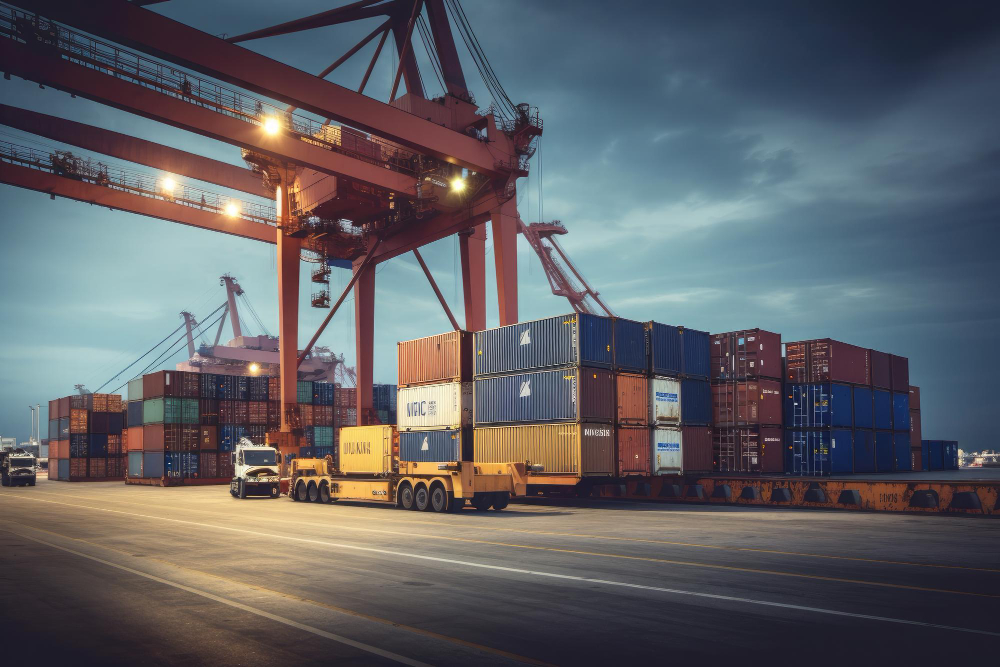What are the emerging trends and challenges in contract negotiation in the supply chain?

Ever wondered how contract negotiation in the supply chain is adapting to modern challenges? From digitalization to sustainability, and navigating uncertainty, the landscape is evolving rapidly. Digital tools like e-procurement platforms and AI are streamlining processes, while sustainability concerns drive ESG standards adoption. Yet, uncertainties like geopolitical tensions and the COVID-19 pandemic pose significant challenges. Collaboration emerges as a key trend, emphasizing mutual benefits over competitiveness. Amidst these shifts, essential skills like strategic planning, effective communication, and ethical awareness are paramount for professionals.
Join us as we delve into the emerging trends and challenges reshaping the world of contract negotiation within the supply chain
Digitalization and Automation
Contract negotiation is changing with the rise of digital tools and automation. These include:
- E-procurement platforms
- Contract Management Systems
- Artificial Intelligence
- Blockchain
They make negotiations smoother, cut costs, reduce errors, boost transparency, and aid decision-making. Yet, challenges like ensuring compatibility, security, and trust arise. There are also ethical and legal concerns around algorithms and smart contracts, plus worries about losing the human touch and creativity. Learn more with our Supply Chain Digitalization Assessment and Course on our website SCMDOJO!
Professionals are increasingly embracing digital solutions for contract negotiation and management. These tools promise efficiency, risk reduction, transparency, and maximizing contract value. As technology advances, we can expect more innovations integrating these solutions into contract management processes.
Sustainability and Social Responsibility
Contract negotiation is changing because people want sustainability and social responsibility in supply chains. Both buyers and sellers need to make sure their contracts follow environmental, social, and governance (ESG) standards. This includes things like reducing pollution, managing waste better, treating workers fairly, and including people from different backgrounds.
But there are challenges. It’s hard to measure how well a company is doing with ESG. Sometimes, being sustainable costs more money. And sometimes, the parties involved have different values and interests. Learn more about Supply Chain Sustainability with our expert Paul Denneman on SCMDOJO website!
In short, contracts now need to cover not just money, but also how a company affects the environment and society. This means considering things like pollution, waste, fair treatment of workers, and diversity.
Uncertainty and Volatility
Navigating Uncertainty and Volatility in Contract Negotiation
Geopolitical Tensions:
Geopolitical tensions contribute to the uncertainty in supply chains, affecting trade agreements and international relations.
Natural Disasters:
Events like earthquakes, hurricanes, and floods disrupt supply chains by damaging infrastructure and disrupting transportation routes.
Technological Disruptions:
Advancements in technology can revolutionize industries but also introduce uncertainties, such as cybersecurity threats or the adoption of new production methods.
Trade Wars:
Trade conflicts between nations can lead to tariffs, sanctions, or trade restrictions, impacting the flow of goods and services across borders.
COVID-19 Pandemic:
The global health crisis has disrupted supply chains worldwide, causing fluctuations in demand, disruptions in production, and labor shortages.
Adapting Contract Negotiation Strategies:
Flexibility and Adaptability:
Contracts need to be flexible to accommodate changing circumstances and adaptable to seize emerging opportunities.
Risk Management:
Emphasis on risk management and mitigation strategies within contracts to address uncertainties and minimize potential losses.
Contingency Planning:
Developing contingency plans to deal with unforeseen events and ensure business continuity in the face of disruptions.
Scenario Analysis:
Conducting scenario analysis to anticipate potential outcomes and develop strategies to mitigate risks associated with various scenarios.
Renegotiation Mechanisms:
Incorporating clauses for renegotiation to adjust terms and conditions in response to significant changes in the supply chain environment.
Balancing Flexibility and Stability:
Supply Chain Integrity:
Ensuring that flexibility in contracts does not compromise the integrity and reliability of the supply chain.
Cost Stability:
Striking a balance between flexibility and stability to maintain cost predictability while adapting to changing market conditions.
Supply Assurance:
Ensuring continuity of supply while accommodating fluctuations in demand and addressing potential bottlenecks in the supply chain.
Collaboration and Innovation
One big change in contract negotiations is moving from being competitive to working together. This shift is happening especially in supply chains. Buyers and sellers are seeing the advantages of collaborating to make things better and solve problems. Instead of focusing on power and price, they’re focusing on trust, honesty, and both sides benefiting.
But there are challenges. Both parties need to agree on goals and rewards, handle conflicts, protect secrets, and check if things are going well.
Collaboration and innovation aren’t always necessary. Depending on how much is being spent and how important it is, different strategies might work better:
- Tactical contracts – low value, low impact, transactional in nature negotiations
- Leverage contracts – high value, low impact, generics negotiations
- Strategic contracts – high value, high impact, collaboration negotiations
- Problematic contracts – low value, high impact, look for alternatives negotiations
Moving from competitive to collaborative negotiations is a big change for businesses, especially in supply chains. It’s about working together for mutual benefits, trusting each other, and moving away from just trying to beat the other side on price. Good communication, shared goals, and keeping secrets safe are crucial. But there are still challenges like managing conflicts and making sure everyone’s happy. Making this change needs practical adjustments and a shift in how businesses think, focusing on new ideas, being sustainable, and having strong long-term relationships.
Skills and competencies
Strategic Planning and Analysis
In today’s contract negotiations, supply chain professionals must think strategically. They need to plan negotiations carefully and analyze data to make informed decisions.
Technical Proficiency
Contract negotiation now requires technical expertise. Professionals must be skilled in drafting contracts accurately and reviewing them thoroughly to ensure they meet the needs of all parties involved.
Effective Communication
Effective communication is key in modern contract negotiation. Professionals must be able to convey their ideas clearly and persuasively to build rapport and reach mutually beneficial agreements. Learn more about Effective Communication for Supply Chain Professionals with our expert Alaa Elhawwari. Click here to enroll!
Relationship Management
Building and managing relationships is crucial in contract negotiation. Professionals need to foster positive connections with counterparts to facilitate smooth negotiations and ongoing collaboration.
Creative Problem-Solving
Modern contract negotiation often involves complex issues that require creative problem-solving skills. Professionals must be able to think outside the box to find innovative solutions that satisfy all parties involved.
Ethical and Cultural Awareness
In today’s globalized world, contract negotiators must be culturally sensitive and ethically aware. Understanding cultural differences and ethical considerations helps build trust and avoid misunderstandings during negotiations.
Continuous Learning and Adaptation
The landscape of contract negotiation is constantly evolving. Supply chain professionals must embrace a mindset of continuous learning and adaptation to stay ahead in the field. This may involve seeking out training, mentorship, and certification opportunities to enhance their skills and stay competitive.
Conclusion
In conclusion, the dynamic nature of contract negotiation within the supply chain demands continuous adaptation. As digitalization, sustainability, and collaboration redefine the landscape, professionals must equip themselves with essential skills and stay abreast of emerging trends. By embracing innovation, fostering collaboration, and prioritizing ethical considerations, supply chain stakeholders can navigate uncertainties and drive positive change.
As we move forward, it’s crucial to remain agile, proactive, and committed to learning. Together, we can shape a future where contract negotiation not only meets the challenges of today but also paves the way for a more sustainable, transparent, and resilient supply chain ecosystem.

